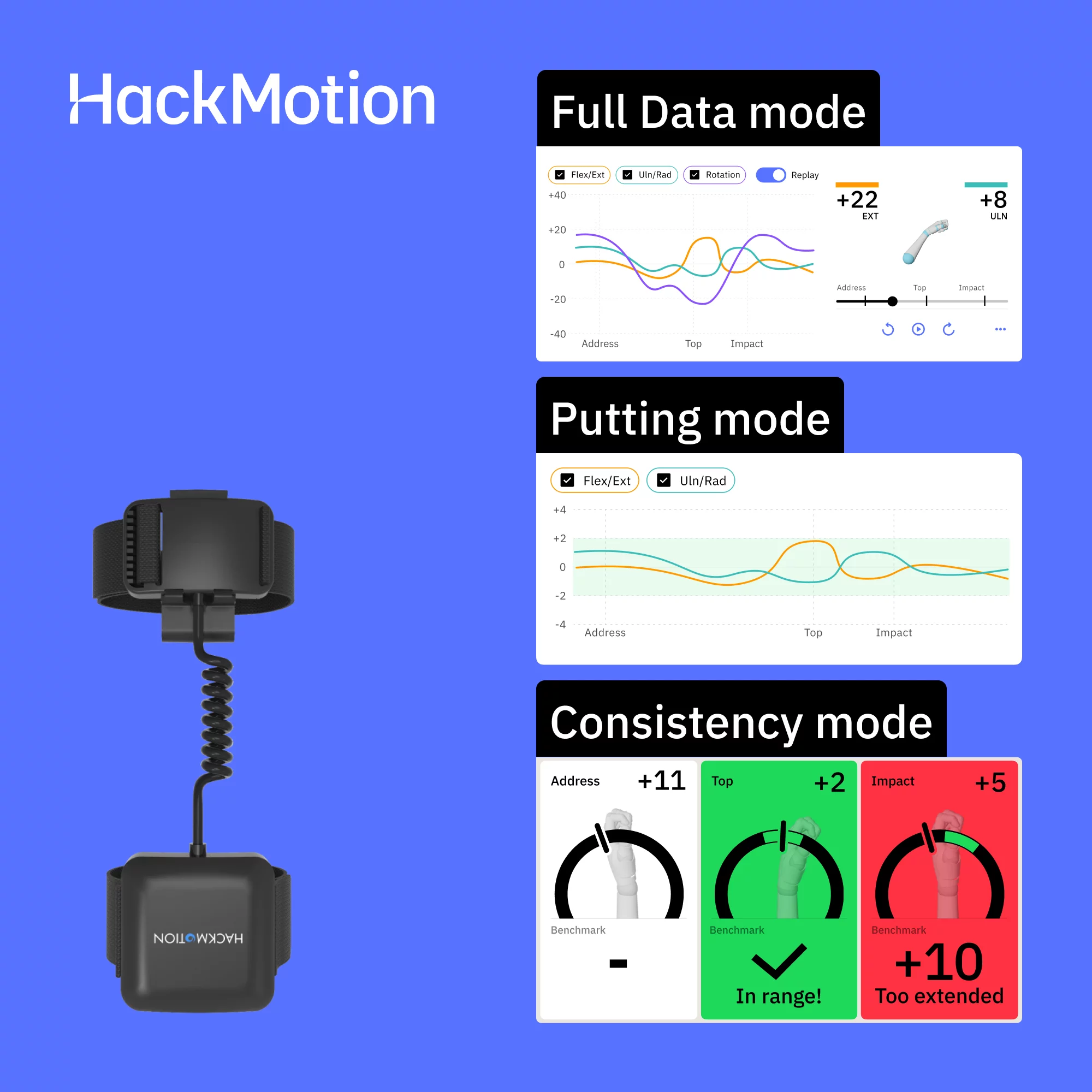What Data does the FullSwing Kit Measure? – Full Swing Kit Data Gudie
Posted in Launch Monitor Data, Launch Monitors
The Full Swing Kit is a new radar-based launch monitor which brings a fantastic suite of launch data to the golfer at a very competitive price. This article will explain the Full Swing Kit data parameters in detail.
Full Swing Kit offers a suite of 16 launch data parameters, including advanced club data points. Full Swing Kit measures this data using a radar-based sensor, which means it is best suited to large indoor spaces or outside use. It is fully portable and features an onboard screen to display data.
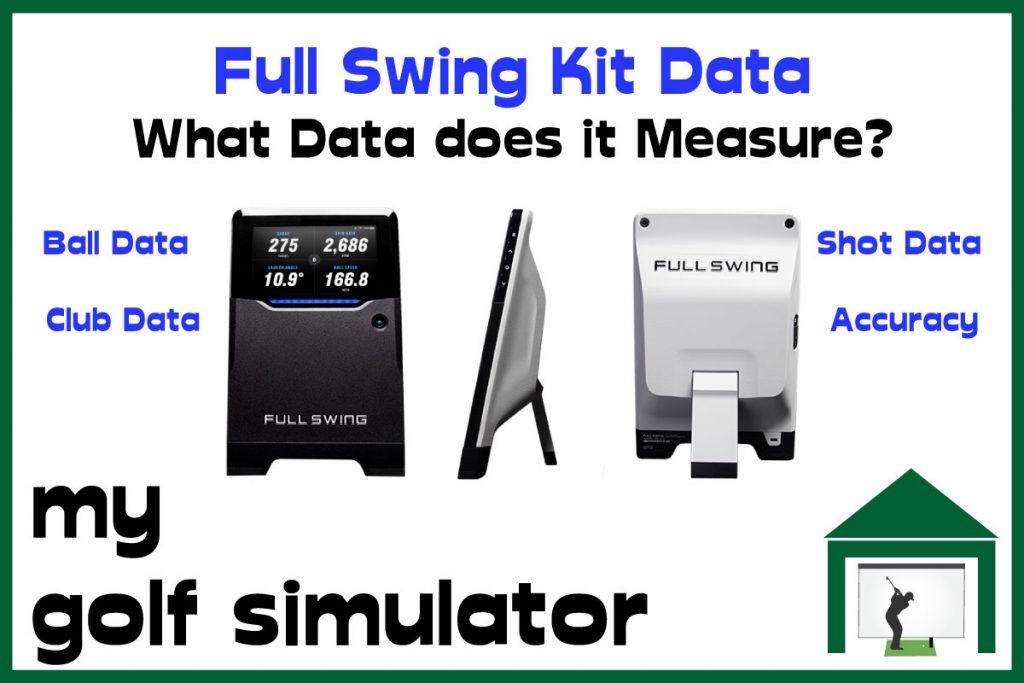
How does the Full Swing Kit Launch Monitor work?
The Full Swing Kit launch monitor works by using Doppler radar to record the movement of the golf ball and clubhead. There is also an onboard color customizable OLED display, making the unit completely portable, as well as a high-definition camera, to allow recording of swing video.
Full Swing offer a suite of apps across multiple devices, including smartphone, tablet and watches. At the moment these are only Apple devices but I expect an update to allow integration with android will come.
What ball data does the Full Swing Kit Measure?
The Full Swing Kit records the following ball data parameters:
- Ball Speed
- Launch Angle
- Horizontal Angle
- Spin Rate
- Spin Axis
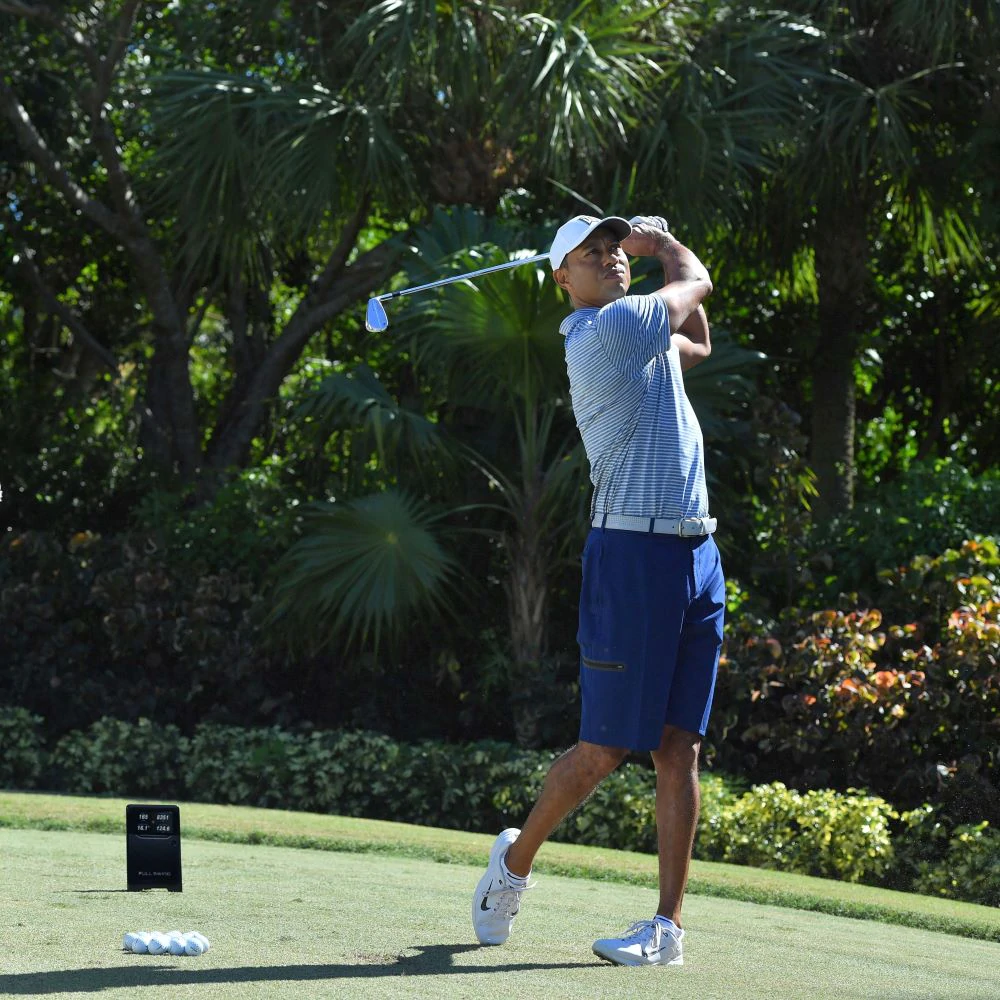
What club data does the Full Swing Kit Measure?
The Full Swing Kit records the following club data parameters:
- Club Speed
- Smash Factor
- Angle of Attack
- Club Path
- Face Angle
- Face to Path
Which shot data does the Full Swing Kit measure?
The Full Swing Kit records the following shot and group data parameters:
- Apex Height
- Side Carry Distance
- Side Total Distance
- Carry Distance
- Total Distance
Full Swing Kit Apps and Software Compatibility
The Full Swing app features graphical representations of your dispersion and shots, as well as showing you your launch data in numerous ways. You can watch and annotate your swing using the Kit’s onboard camera.
There is a basic version of the app and a premium version with some extra features for just under $100 per year, which include storing all your historical data and swing videos.
At the moment there is no way of showing you the shape of your shot, modeling the ball flight on the driving range. You can do this on the Kit using the E6 Connect integration though. I wonder if this will come with a future update to the Full Swing Kit app.
Currently, the only third-party golf simulation program compatible with the Full Swing Kit is E6 Connect. I would expect that more programs will become integrated with time.
The Kit has also begun life with only portable (ie iOS tablet/smartphone) integration with E6 and not PC, I very much expect this will change with time.
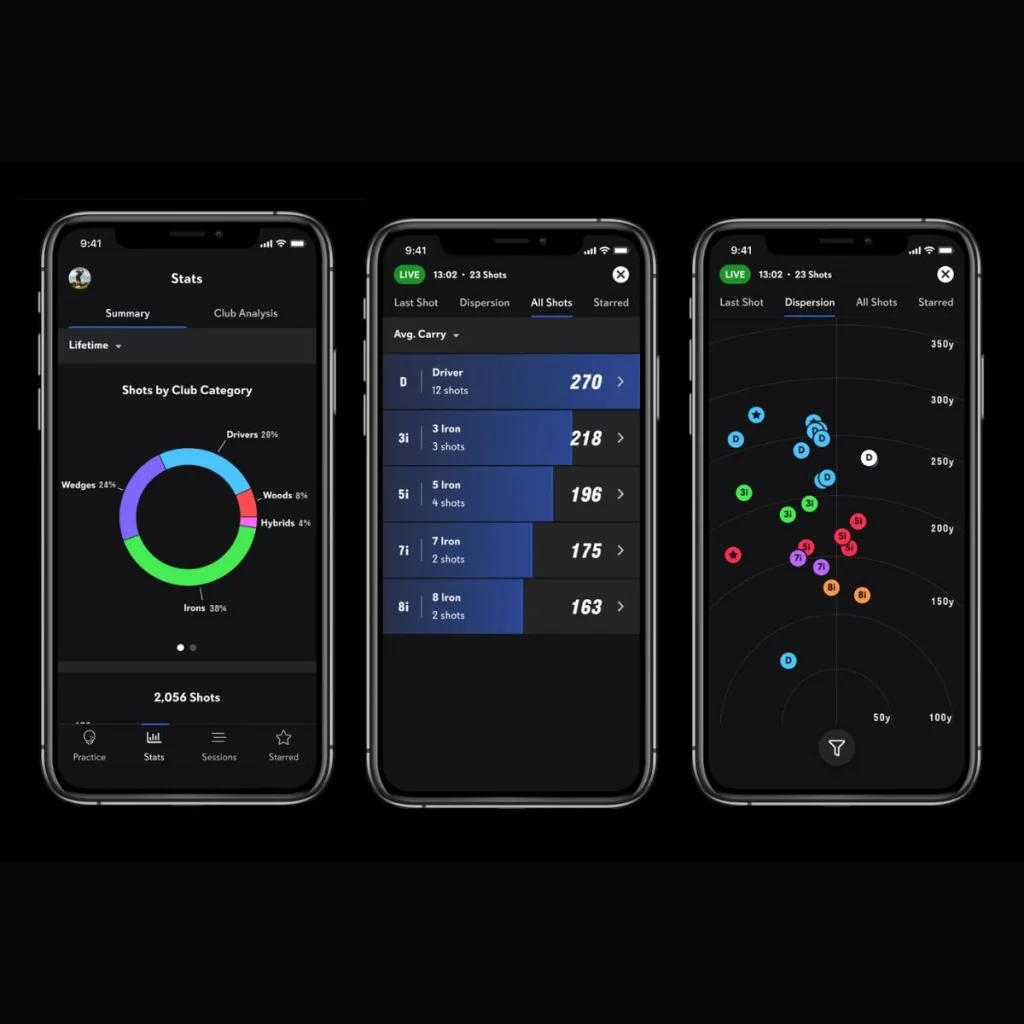
How does the Full Swing Kit Data Compare to Data from Competitors?
The Full Swing Kit is a portable, radar-based launch monitor with a high-quality onboard display that records 16 data points and is available at a very good price in comparison to other launch monitors with these same features.
The suite of club data is broad, featuring advanced data points like face angle and face-to-path, and at a very competitive price. Competitors such as Mevo Plus have added these data points with the Pro Package, but you don’t get the onboard display.
The GC Quad has long been the shining example of a highly accurate launch monitor that also offers complete portability and an onboard display. If the Full Swing Kit can demonstrate good accuracy then the price point of $3999 looks very competitive.
I would speculate that Kit was originally developed with outdoor use in mind, and indoor use will only get better with time. Accuracy will improve and there will be more simulator software integration.
I believe that the range of ball and club data recorded by the Full Swing Kit is excellent at this price point and when the onboard display is considered too. If the Kit can establish a good reputation for accurate data then it is a very attractive launch monitor package!
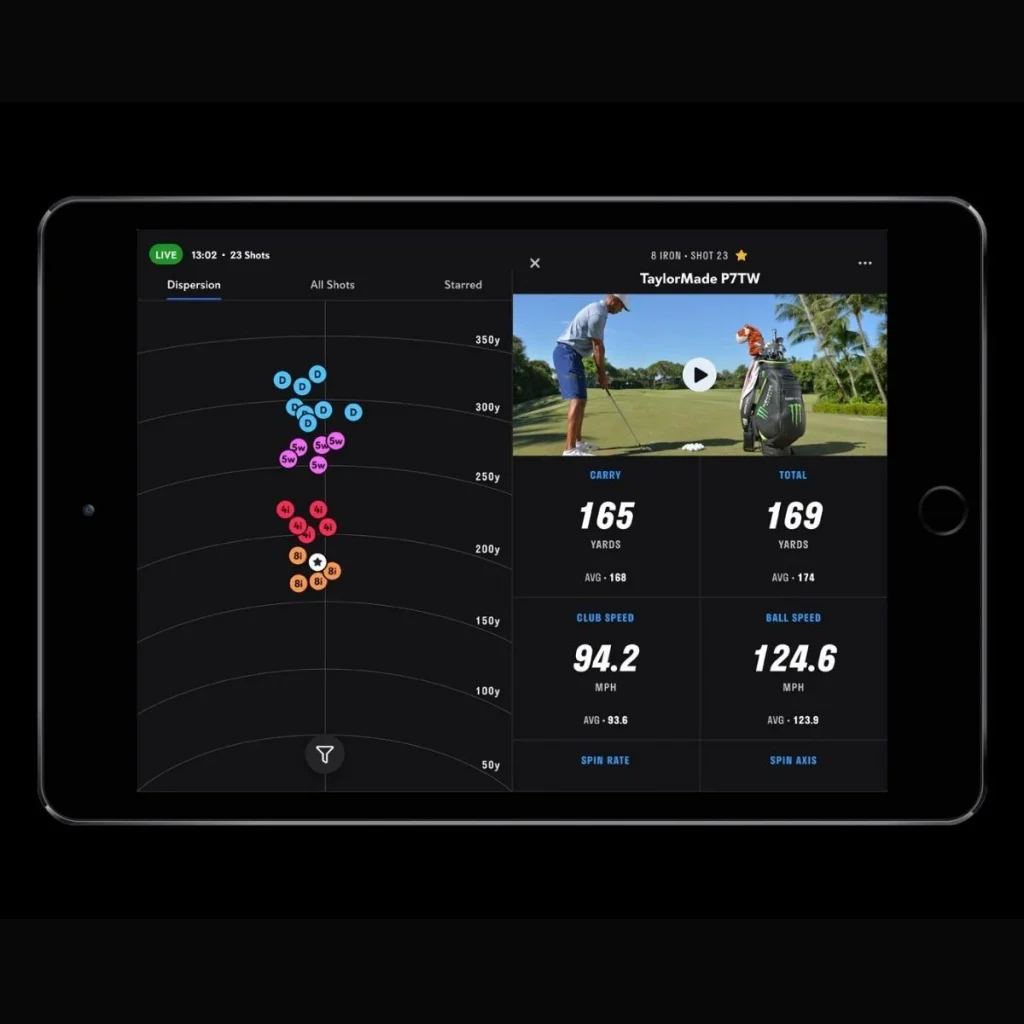
Full Swing Kit Data in Detail
Ball Speed
Full Swing Kit measures ball speed, which is the velocity of the ball at the moment it leaves your clubface. Ball speed is proportional to the amount of kinetic energy imparted by the club, the quality of strike, the quality of equipment, and whether the launch angle and spin are optimal.
This parameter closely relates to how far the ball will carry in the air, though it is not the only variable in calculating carry distance.
Whilst there are multiple levels of complexity to these numbers, striving for a higher ball speed should equate to longer drives and greater distance. Full Swing Kit allows golfers to work on increasing their ball speed whilst keeping an eye on a range of other parameters.
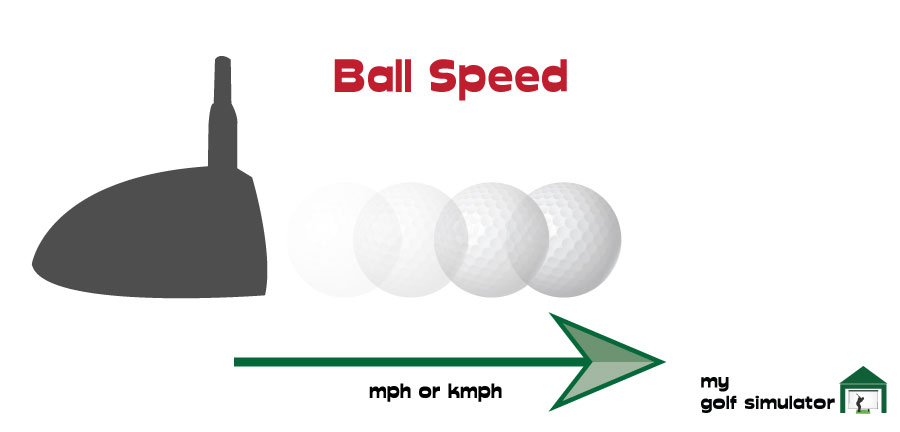
Spin Rate
Some launch monitors display spin as a total spin rate and a spin direction (spin axis), whilst some read both backspin and sidespin. In reality, the golf ball is only spinning in one direction, indicated by the spin axis. The spin rate is simply the number of revolutions of the golf ball per minute.
The Full Swing Kit displays back and side spin instead as a spin rate and a spin axis.
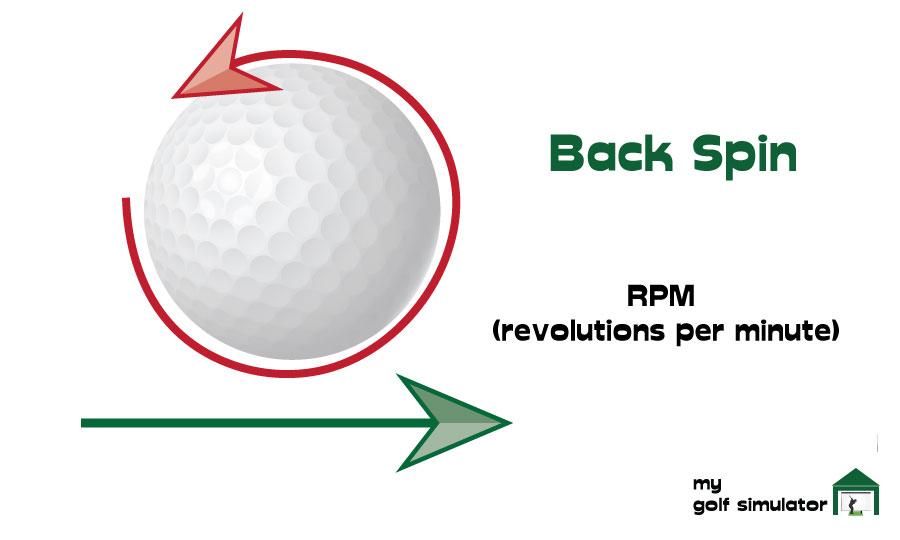
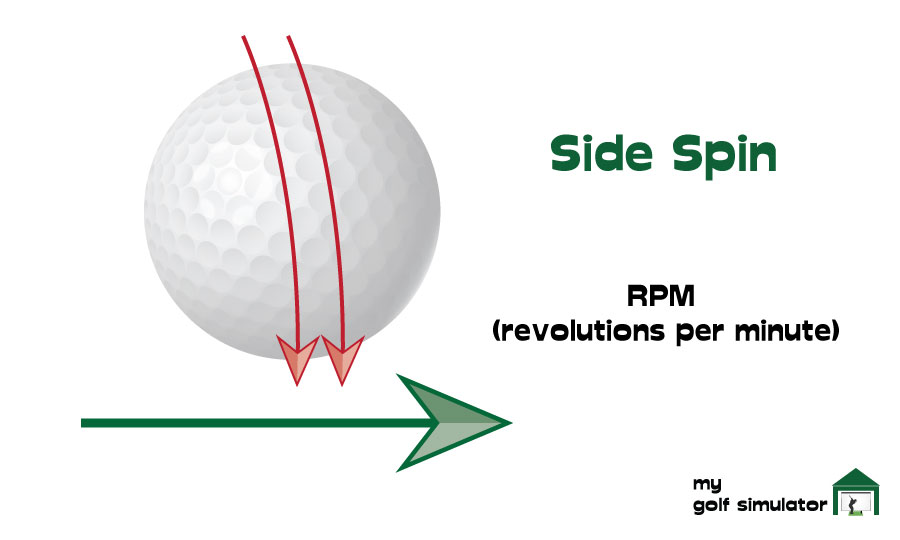
Spin Axis
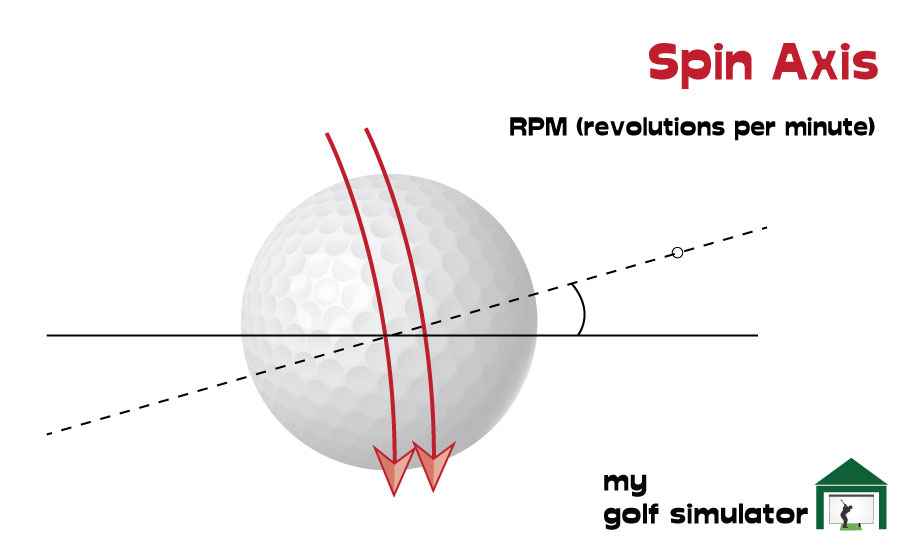
Spin axis is the combination of backspin and side spin, indicating the direction of spin imparted to the ball at impact. The spin axis will remain the same throughout the flight of the ball. Full Swing Kit also combines back and side spin, showing you a total spin rate and a spin axis.
Spin axis will be negative on the Full Swing Kit when the ball is spinning to the left, or positive when the ball spins to the right. A high spin rate with a spin axis close to zero will indicate a higher backspin without left or rightward spin.
Horizontal Angle
Horizontal Angle is also known as launch direction, side angle or ‘azimuth’ and is the angle at which the ball starts its flight, relative to a straight target line. This parameter is termed ‘horizontal angle’ on the Full Swing Kit. You can use the horizontal angle to ascertain whether you’re starting the ball online or not.
Horizontal angle is very closely related to the face angle of your club though it won’t be exactly the same.
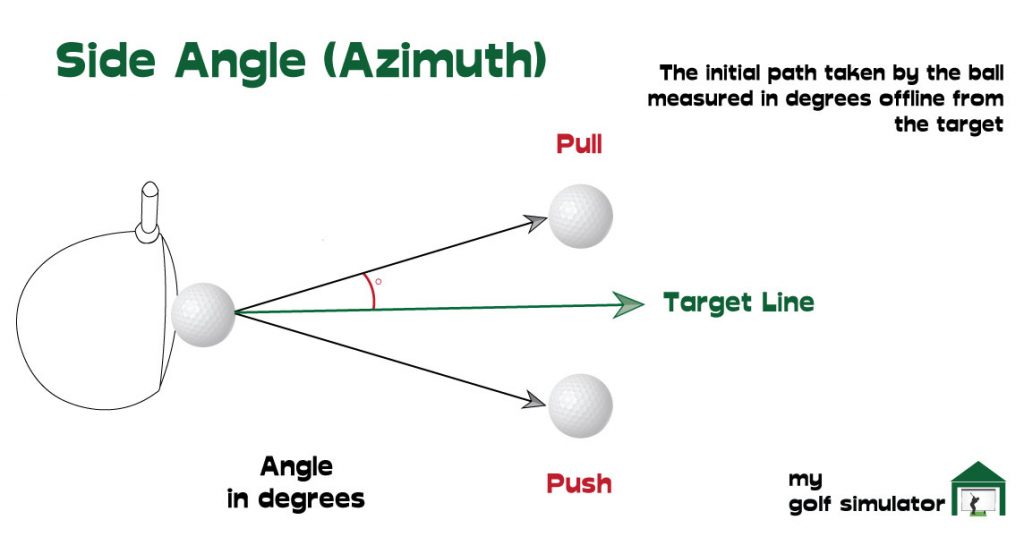
Launch Angle
The vertical launch angle is a measure of the angle of the ball’s take-off relative to the slope of the ground. You can use the Full Swing Kit to learn to control the trajectory of your shots, the ability to hit high and low shots on command will elevate your golfing skill greatly.
It is important to optimize your launch angle in order to maximize distance with your driver. Hit the ball at too high a launch angle and it will go up quickly, spin too much and come straight back down, too low and the ball will fall before it can reach its full potential.
If the ground is sloping down and you hit up, this will have a higher launch angle than an identical shot played on flat ground. You should find that your launch angle is always a slightly lower number than the measure of the dynamic loft.
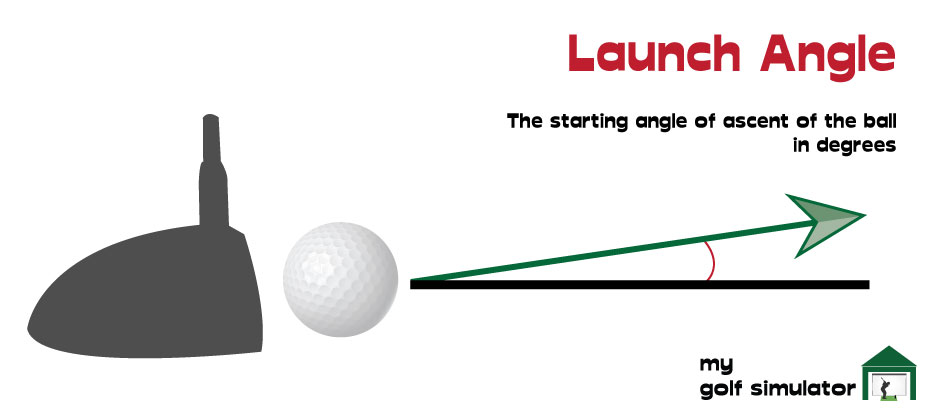
Carry Distance and Total Distance
The data that is measured by the Full Swing Kit system is fed into the internal software and through Full Swing’s algorithm, to produce a carry distance and total distance. This is largely the same way all launch monitors arrive at carry and total distance.
The amount the ball is expected to roll is the difference between the two numbers. Lower shots with less backspin will roll more, so the difference between carry and total distance will increase.

Apex Height
The apex height is a launch parameter given by the Full Swing Kit and represents the maximum height the ball will attain at the top of its flight. Golfers can use this to work on control of trajectory and playing in the wind.
Club Head Speed
Full Swing Kit measures clubhead speed, which is the velocity of the golf club at the moment before impact with the ball. Club speed is another critical factor in determining the total distance that your golf ball will travel, though strike quality, launch angle and spin numbers are equally important.
Club speed and ball speed are directly related to one another. The faster the club is traveling prior to the impact with the ball, the faster the ball is going to go assuming that the ball is struck efficiently.
You can have a high clubhead speed but a really inefficient strike if you don’t hit the ball with the center of the clubface, or have a poor club path or an open or closed clubface. We cover these parameters later on in this post, Full Swing Kit can help you keep track of all these parameters.
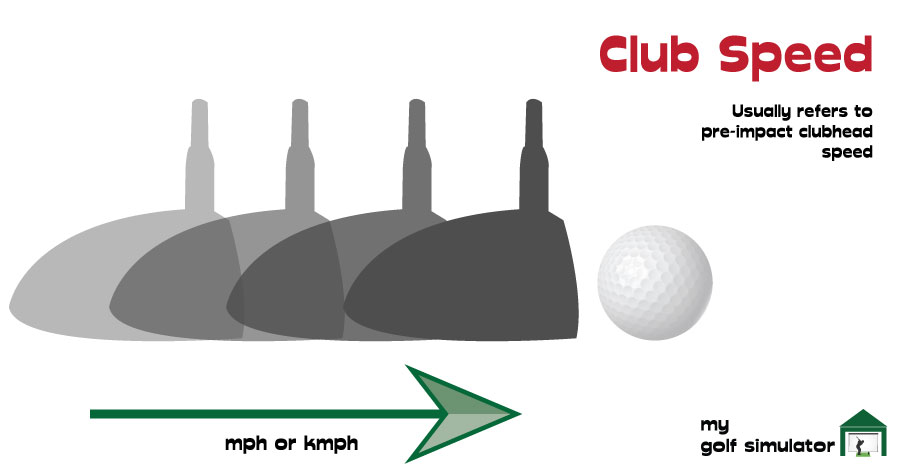
Club Path
The club path is the direction of the golf club through impact, in a two-dimensional horizontal plane. Club path is independent of the angle of the clubface and it can be described as square, in-to-out or out-to-in.
More advanced club data like these allow the golfer to work in-depth on the shape of their swing and make them better equipped to learn to fix a slice or shape shots at will.
“In to out”, for a right-handed golfer, is the movement to the right at the moment of impact and results in a positive club path. “Out to in”, again for a right-handed golfer, offers a negative club path and indicates a movement inwards to the left. All numbers would be switched around for a left-handed golfer.
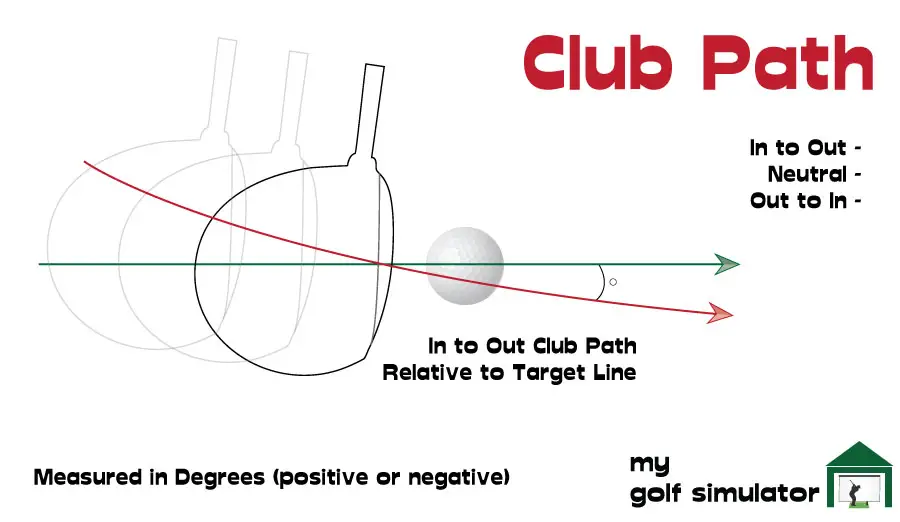
Face Angle
Face angle is the angle of the clubface relative to the target line, which tells you the direction the clubface is pointed (either left or right) when the club impacts with the ball. A face angle number of zero would indicate a clubface pointed straight at the target line.
For a right-handed golfer when the face is open – you get a positive number and a negative one when the face is closed. (Reverse these for left-handed golfers).
Imagine your club path is perfectly square to target at impact, but the face is a few degrees open. The ball will start straight and veer off to the right with a fade. A closed clubface (and a neutral path) will lead to a ball starting straight but drawing off to the left for a right-handed golfer.
For most situations when you want to hit a straight shot, you’ll be looking to get as close to zero face angle as possible.
However, there are times when a straight shot is not what you need, and mastering face angle will give you a greater degree of control over where the ball will travel. Full Swing Kit will allow you to work on these finer details.
The face angle parameter describes whether the clubface is said to be open or closed. You can still have a face angle of zero but a club path that veers violently inward or outward. This brings us neatly onto face-to-path.

Face to Path
Full Swing Kit calculates Face to Path, which is the difference between the face angle and the club path. A clubface that’s open relative to the path of the club will produce a fade, whilst a face that’s closed to the path will produce a draw.
Note that both club path and face angle are measured in relation to the target line. Face to path combines the two and works out whether your clubface is open compared to the club path, or closed.
If the clubface angle is square to the path then the ball will travel straight down that path (which may be a push or pull depending on your club path).
If you’re unsure about this data parameter, make sure you fully understand club path and face angle first.
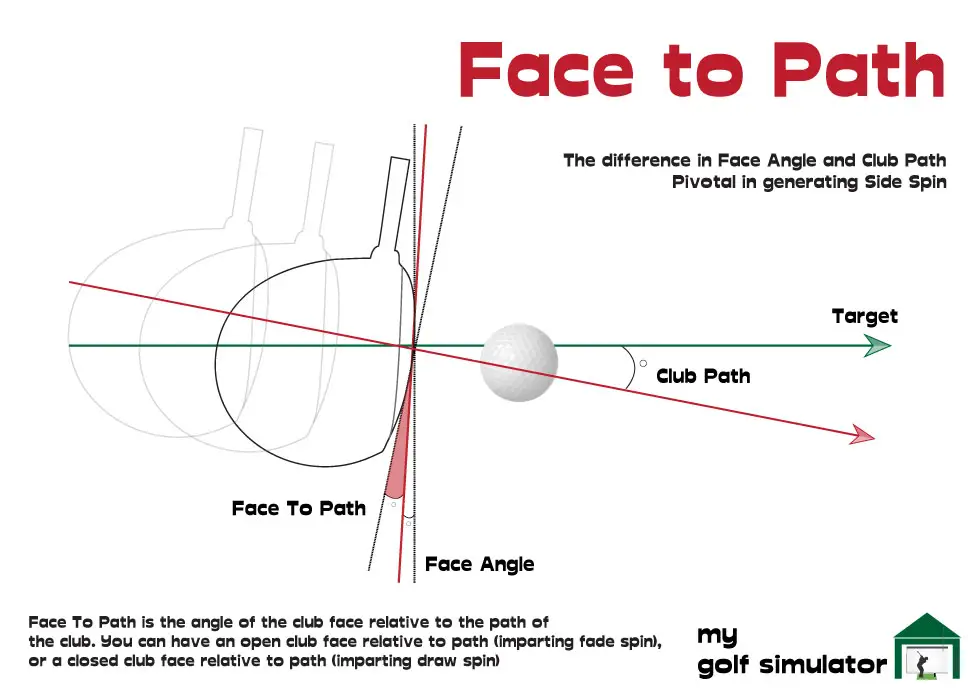
Attack Angle
Full Swing Kit measures the attack angle, which describes whether the club is traveling in an upwards or downwards direction relative to the ground, as it approaches the golf ball. The angle of attack can be positive or negative. Using this data can help you optimize your ball striking.
A positive attack angle shows you’re hitting upwards as you strike the ball as many golfers do with their driver when the ball is teed up, as shown in the picture below. A negative attack angle shows you’re hitting downwards towards the ball like is normal with irons and wedges.
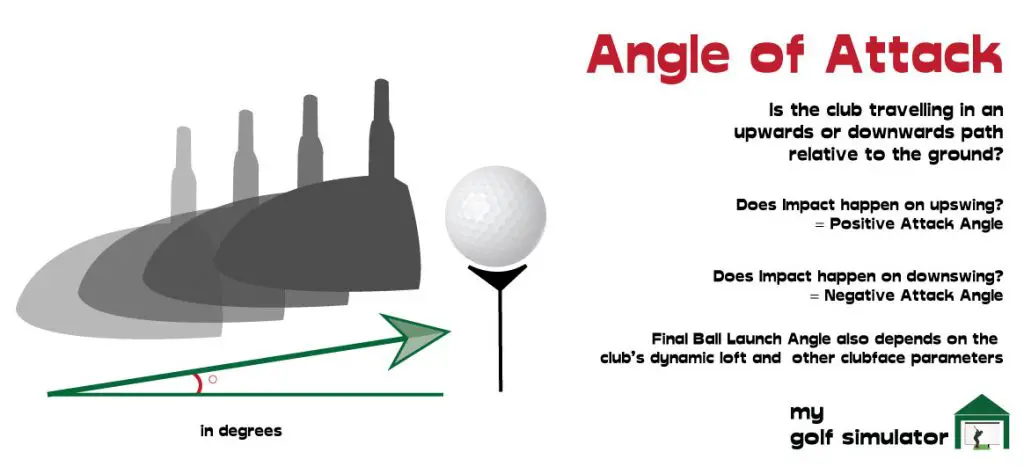
Smash Factor
Full Swing Kit is able to display smash factor, which is a measure of how effectively their club speed is transferred into ball speed. Smash factor is calculated by dividing the ball speed by club speed. Smash factor is determined by your swing, the clubface and the ball.
Note that ball speed will always be higher than clubhead speed, if your club speed appears higher than your ball speed then your data is probably faulty, or there is a problem with the units of measurement used.
The maximum target for a golfer assuming they are using driver off the tee is a smash factor of approximately 1.5 and you won’t be able to achieve higher. The maximum values are somewhat dependent on the legal limits of golf clubs (eg coefficient of restitution etc).
Higher lofted clubs usually lead to lower smash factor numbers as more of the energy of the club is transferred to vertical launch and spin, than carry distance. If you’re using a pitching wedge, you would expect a number that’s closer to 1.24.
Side Carry Distance
Side carry distance is a Full Swing Kit data parameter that goes by a few other names (such as distance offline and lateral landing) depending on which launch monitor you use. It is the lateral distance between the ball’s landing position (without roll) and the central target line.
Side carry distance shows you how far off target you’re landing the golf ball. It does not describe the shot shape that the ball took to get there, where the ball ended up after rolling and spinning on the ground.
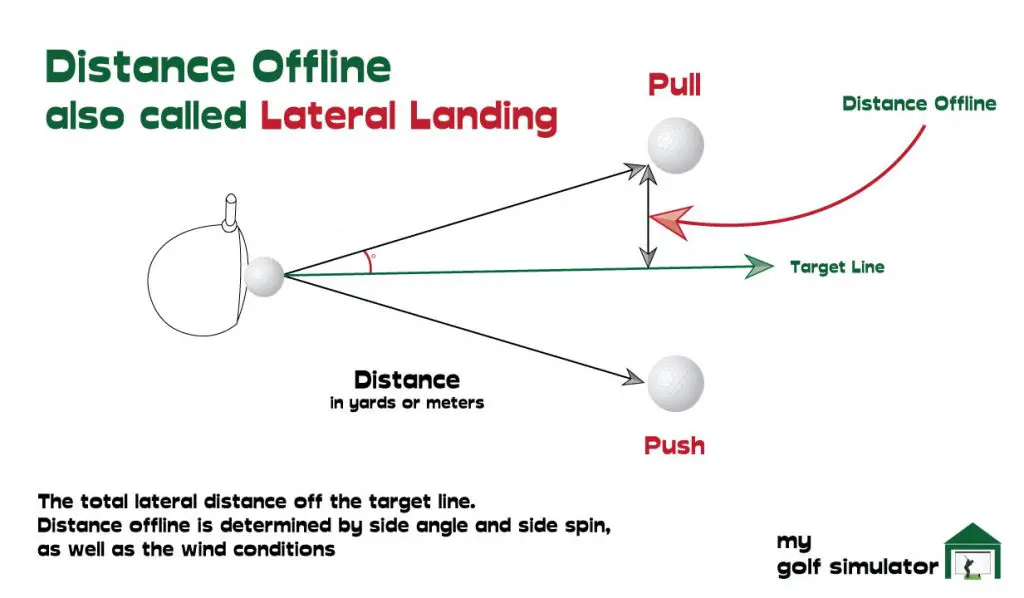
Side Total Distance
Side total distance is a description of how far laterally from the central target line your ball came to rest. This data parameter takes into account both carry and roll.
You may choose to measure your dispersion and accuracy using side total carry or side total distance. Both parameters are valid measures of how far from the target you are hitting the ball.
Conclusion – Full Swing Kit Data Key Points
The Full Swing Kit is a great new addition to the launch monitor market. It is a fully portable, radar-based launch monitor with an onboard display, at a much more attractive price than some of the other launch monitor heavyweights that boast these features.
Full Swing has an excellent golf simulation pedigree, previously known for the design and production of very high-end golf simulator rooms. Their move into the more affordable end of the market is very exciting! They’ve even worked with Tiger Woods on the build of the Kit, so I expect it to be quality.
Here’s a simple list of the Full Swing Kit Data parameters:
- Carry Distance
- Total Distance
- Spin Rate
- Spin Axis
- Ball Speed
- Club Speed
- Smash Factor
- Club Path
- Face Angle
- Face to Path
- Attack Angle
- Launch Angle
- Horizontal Angle
- Apex Height
- Side Carry Distance
- Side Total Distance
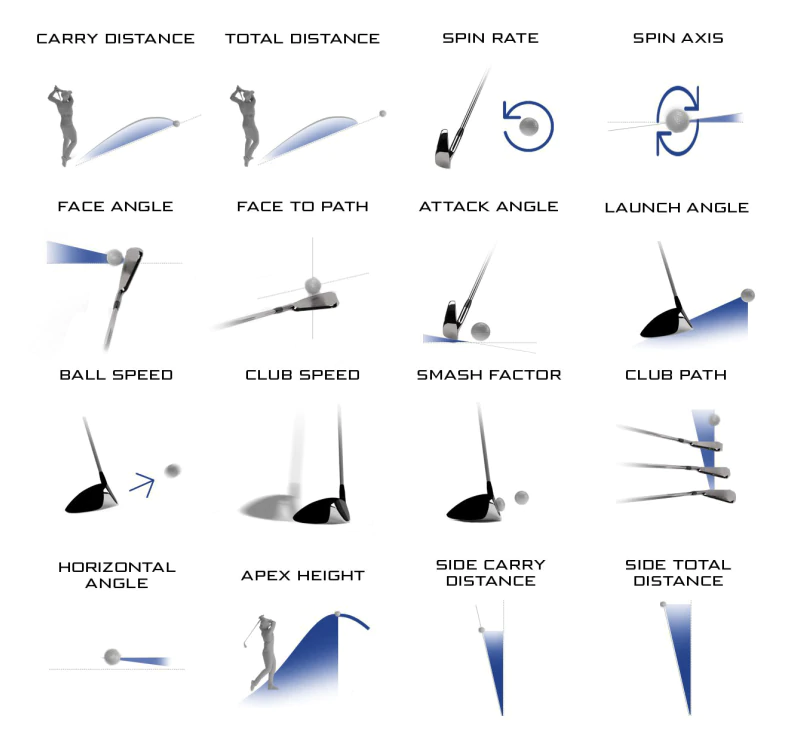
Mevo Gen 2 Space Requirements
Gray Impact Screens – Pros and Cons
ABOUT THE AUTHOR
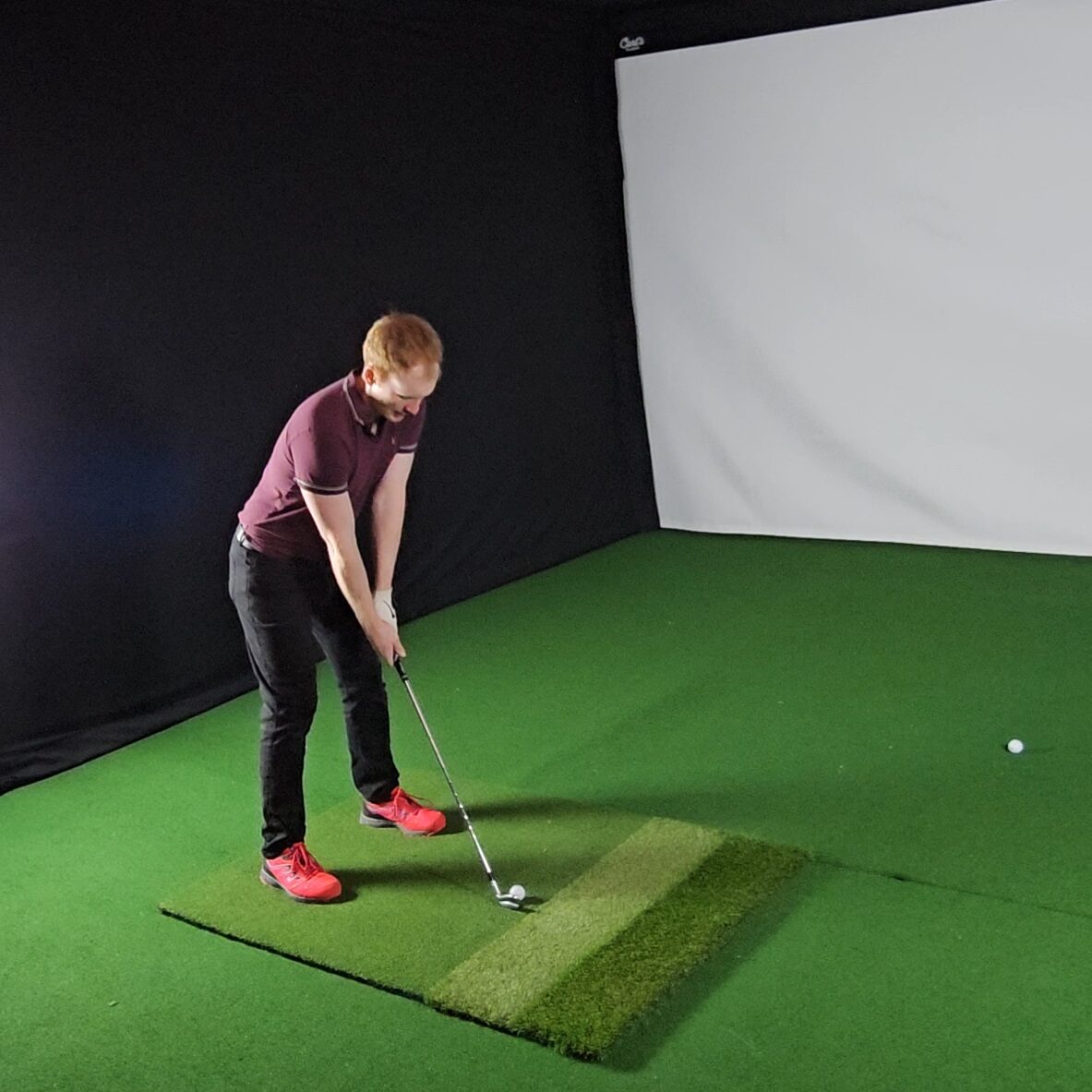
Hello! My name is Alex and it is my mission to bring you all the information you need to build your own home golf simulator! I hope mygolfsimulator.com helps you on your journey to better golf at home!
LEGAL INFORMATION
On this site, you'll find articles on all aspects of building a golf simulator. I will also link to other sites where you can buy some of the simulator components. Some of these links may be affiliate links, which means if you click them I gain a small commission at no extra cost to you. This really helps out me and my site so thank you in advance! mygolfsimulator.com and all related social media accounts are property of Awonline LTD.




